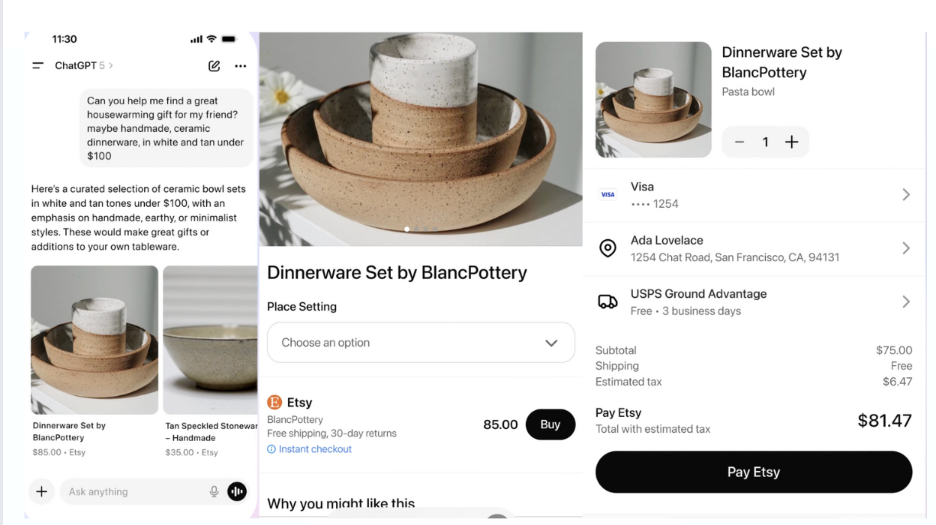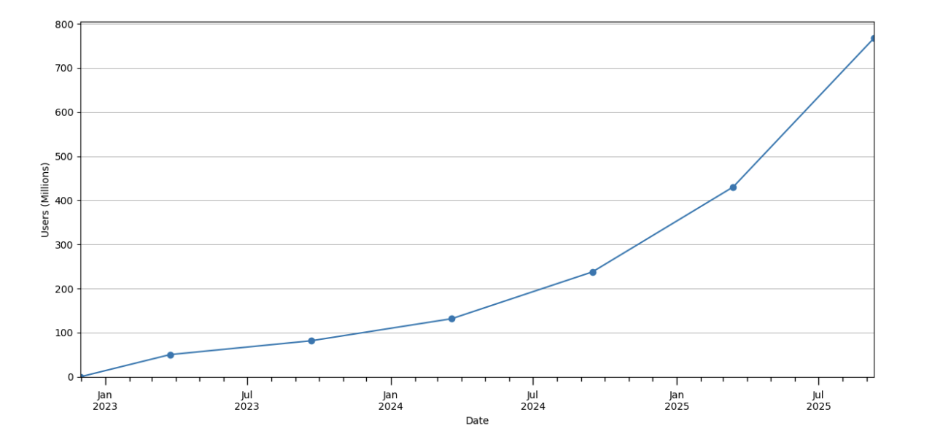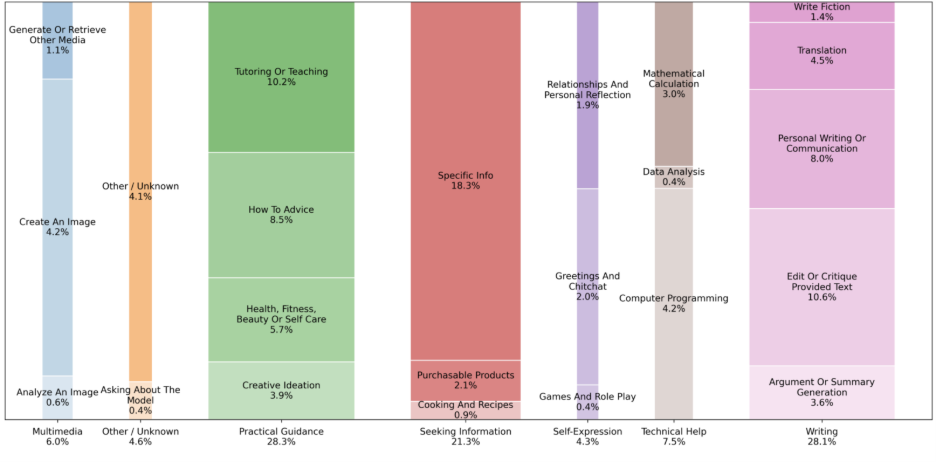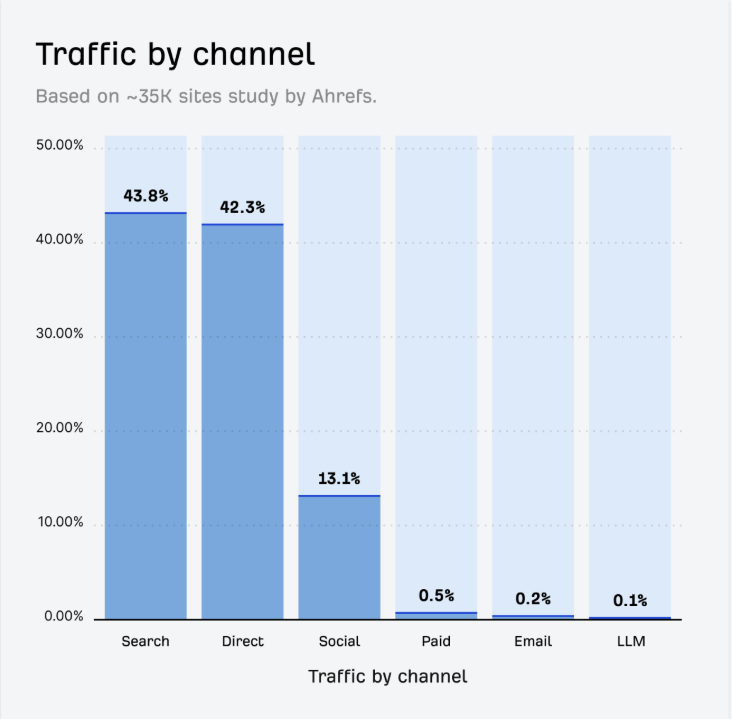

Woh!!! It’s everywhere now.
Anyone still debating whether AI is going to disrupt ecommerce or that it won’t?
Maybe it’s time to rethink that.
We all know that ChatGPT is no longer just a chatbot. It’s already found its way into almost every corner of our lives: our work, our shopping, our daily news, maybe even as a relationship advisor.
Not all hype turns into history. Despite ChatGPT’s arrival, we haven’t seen a single D2C brand become an overnight sensation because of it.
And now it’s taken a step further moving into payments too!
It’s called Instant Checkout, and it allows you to buy directly in chat with just a few clicks. Partnering with Stripe, this means we can now go from search to buy within the same chat window, just like that.

Let’s take a moment to look at how it actually works, before we get into whether it will not work or if this is the kind of big shift, we never imagined even in our wildest e-commerce dreams.
Ask ChatGPT “best housewarming gifts under $100,” and it will pull products from across the web.

If the site supports Instant Checkout, you can hit buy, fill in your details, and the order is placed, without ever leaving the chat.
That’s the part that makes you pause: without ever leaving the chat!
It’s frictionless, yes. But your customer never lands on your website. Everything happens inside the bot.
So, is this really a new way of buying or It's just another hype cycle for ChatGPT that's simply unable to sustain the growth that got it so much investment in the first place.
To put it in context, ChatGPT hit more than 700 million weekly active users by July 2025, that’s nearly 10% of the world’s adult population.

Let’s be honest about what people actually use ChatGPT for. Around 70–80% of sessions are for writing, obtaining information, or seeking advice. Only 2.1% involve products you can actually buy. Interestingly, self-expression has more volume than shopping
Clearly, that’s not a “ready to buy” crowd. It’s a “think, plan, draft” crowd.

And think about it,
The actual buying moment? Until now, it’s always happened elsewhere, because ChatGPT didn’t have a checkout button. Now it does.
That changes the rails, but not necessarily the shopping behavior. Just because the buy button moved inside the chat doesn’t mean shoppers will skip the steps they trust most.
Because who pays without comparing prices, checking reviews, scrolling through pictures, even asking friends?
Shopping isn’t just about utility. It’s visual. It’s emotional. It’s comparative. We buy when pictures persuade us, when reviews reduce the risk, when browsing sparks the unexpected.
Remember Labubu dolls? The same collectibles that crossed 8 billion USD in sales in 2025. That’s what emotional demand looks like- stories, scarcity, and sentiment driving the cart, not just convenience.
Sometimes we even go as far as opting for cash on delivery “just in case.”
That’s how much trust and visual reassurance still matter in ecommerce.
A single-item, text-only checkout flow misses all of that.
I think we’ve seen this film before. Remember when Voice commerce, Messenger chatbots, AR mirrors all launched with billion-dollar projections? They all fizzled.
All worked technically. All failed behaviorally.
Merchants on reddit are saying the same thing,
This is the equivalent to asking Alexa to shop for you, when was the last time you purchased anything through it? This is not how shopping works, the buyer’s journey is way longer than blindly giving ChatGPT a prompt.
So, is it persuasive? not really.
Let’s move from theory to numbers.
Ahrefs studied the traffic makeup of 35k websites, and the AI referral results were mehh!!
AI chatbots send just 0.1% of all referral traffic. Not 10%. Not 1%. A tenth of a percent. For context, that’s less than email referrals, and it’s nowhere near the reach of search.

Zoom in further, and the picture sharpens:

Which means that for us, the share is vanishingly small. Almost invisible.
By the time you filter AI referrals (0.1% of referrals) into the slice of total traffic (referrals usually make up 10% or less of a site’s mix), you’re left with something close to 0.01% of total traffic.
And then there’s the volatility. In July 2025, ChatGPT’s outbound clicks collapsed by 52% in a single month after OpenAI reweighted how it cites source pushing more visibility to Reddit and Wikipedia while suppressing long-tail sites.
It was a platform-level change in citation logic.
So, for an average e-commerce merchant the reality is-
In case if we are hoping that Instant Checkout might be a new channel, the math just doesn’t add up, at least not yet.
Even if Instant Checkout grows, merchants face a bigger structural risk: platform bias.
Generative AI tools aren’t built to be neutral traffic distributors. Their incentive is to keep users inside the chat and eventually monetize that flow. We’ve seen the same playbook with Google (AI Overviews cutting clicks – Zero click attribution), Meta (links penalized in feeds), and Amazon (self-preferencing paid placements).
ChatGPT is trending the same way.
Some operators already notice discovery blind spots-
“We have one of the biggest retro gaming store in our country but ChatGPT didn't recommend us. To my surprise it was under the impression that we are not a retro store. After a few follow-up question as to why that is, we had to rework our homepage and overall communication.”
Others warn of platform bias. One seller noted:
“You’ll just increasingly see preference for its feed-generated products.”
Meanwhile, other sellers in the also noted-
“Once Instant Checkout is rolled out, ChatGPT won’t search the web for products anymore but its own index of product feeds.”
Both signal the same concern: this isn’t neutral distribution. It’s a platform incentive to prioritize its own product feed, effectively competing with merchants for visibility.
But the real challenge lies in the business model. As one agency leader put it:
“There’s no option yet to retarget cart or product-page visitors.”
And without retargeting hooks, loyalty flows, or multi-item carts, Instant Checkout risks flattening the very mechanics that drive AOV and repeat purchase.
And that is only for today. OpenAI has already said:
“Today, Instant Checkout supports single-item purchases. Next, we’ll add multi-item carts and expand merchants and regions.”
So maybe, for now, the only rational plan for us is to wait and watch. Or perhaps even ignore it, until the behavior, not just the rails, shows signs of real adoption.
Don’t give in to the hype just yet. Some people/agencies will blow this up as the next big game, but you can sense the reality and see the playground for what it is, not what they’re making it out to be.
Because in e-commerce, behavior always beats hype. And right now, the behavior just isn’t buying inside the AI chatbot.